Inefficiency: it is one of the few words that can make a project manager cringe and raise the hairs on the back of their neck. Hearing from your executive that you are running an inefficient project generates a level of shame in managers that is hard to forget, and that hangs over you like a stormcloud. Inefficiency plagues projects that have either not been properly planned, are poorly scheduled, and/or experience poor quality control/supervision.
Today, we will detail what these operational inefficiencies are, how to identify them, what are common causes of operational inefficiencies are, and how to become a top-notch project manager and solve them. And remember,
“Effectiveness is doing the right thing; efficiency is doing things right.”
Peter Drucker
1. Improper planning
Operational inefficiencies can often begin before the project even begins, during the planning stage. Improper planning can range from neglect of resource deficiencies or redundancies, both of which will produce an inefficient operation, or improper planning can neglect to establish operational contingencies should a problem arise.
A top-notch project manager will know it is wise to invest heavily in time during the planning stage and scrutinize every detail. When the project gets up and running there is far less of a chance that any unforeseen monkey wrenches will slow things down.
During the planning stage, identify which factors can be the most vulnerable to risk. 20% of the at-risk operations produce 80% of wasted project time (these numbers are going to come back again in this article).
Spending time and resources on planning is a huge ROI for your project‘s operations to run smoothly, and eliminates the possibility of many minor, avoidable, yet troublesome hindrances ever given a chance at life.
Birdview’s resource management tools offer a solution to these challenges. Using Birdview‘s resource planning module, project and resource managers can gain clear visibility into resource availability and capacity, which helps in identifying potential shortages or redundancies before they become problems.
Further, managers can resolve conflicts and optimize resource allocation by ensuring that the best resources are assigned to the most critical projects. With Birdview, managers can allocate resources based on a variety of variables such as project type, client importance, timelines, business goals, and profitability. This allows for prioritization that aligns with the organization‘s strategic objectives.
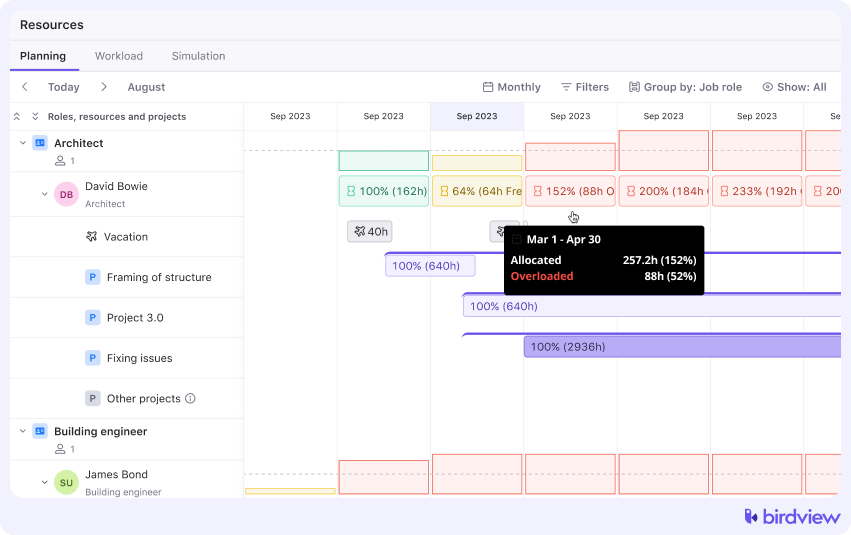
2. Poor scheduling
Resource Scheduling is more than telling your staff to show up at nine and leave at six. It is essentially how managers and their teams do their part for the project. Without scheduling, nothing would ever get done.
An example of poor scheduling would be this example:
Say you are managing Project 1 and Project 2, and Project 2 is almost complete ahead of the deadline.
However, Project 1 is for a high-priority client and running a bit behind the projected deadline.
Instead of assigning some of the Project 2 staff to Project 1, you decide to start Project 3 in conjunction with the ongoing, high-priority Project 1.
Clearly, the wiser choice would be to get Project 1 done as soon as possible, as one of the foundations of business is the Pareto Principle: You should focus 80% of your efforts on the 20% of your business that brings the most revenue.
If you are using cloud-based project management software, scheduling becomes even easier to efficiently manage. Each project should have a work breakdown structure (WBS) designed to visualize every step of the way and the order in which tasks should be completed. Here‘s what a typical, comprehensive WBS looks like:
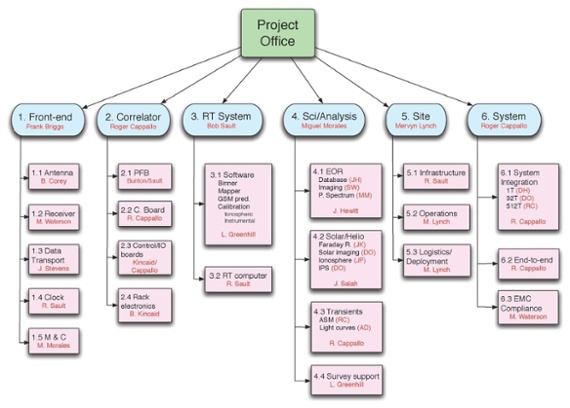
Notice how each task is assigned a name beneath it? WBS is a boon to project scheduling, as it keeps all parties informed on project progress, and where there are deficiencies. A seasoned, experienced PM will know how to schedule and assign which tasks to which staff, and will notice if anyone is lagging in performance.
Further, consider this advantage of WBS:
Maybe “Team Member A” has a great skill set and is experienced with previous projects, but you have noticed that they are lagging at work. Perhaps you have assigned them a task that is new ground for them, and this is a priority project. “A” should be reassigned, rather than spending valuable time on re-training them. It is likely that you have noticed “Team Member B” completing their tasks far ahead of schedule. You can quickly and efficiently swap their roles if “B”, due to their experience, is able to do “A‘s” task and vice-versa.
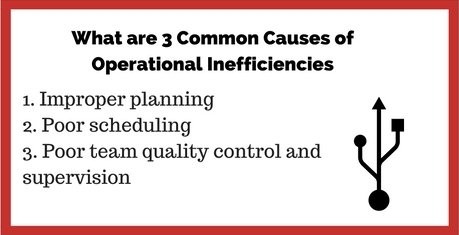
Efficient scheduling means that the project manager is making use of each team member‘s talents in an effort to achieve a cohesive, balanced approach to the completion of projects.
Birdview‘s task management and scheduling features simplify the scheduling process by allowing project managers to create detailed schedules that are easy to follow and adjust. The platform‘s Gantt Chart and Timeline View provide visual tools that clearly lay out the order and timing of tasks, ensuring that everyone understands the project‘s schedule.
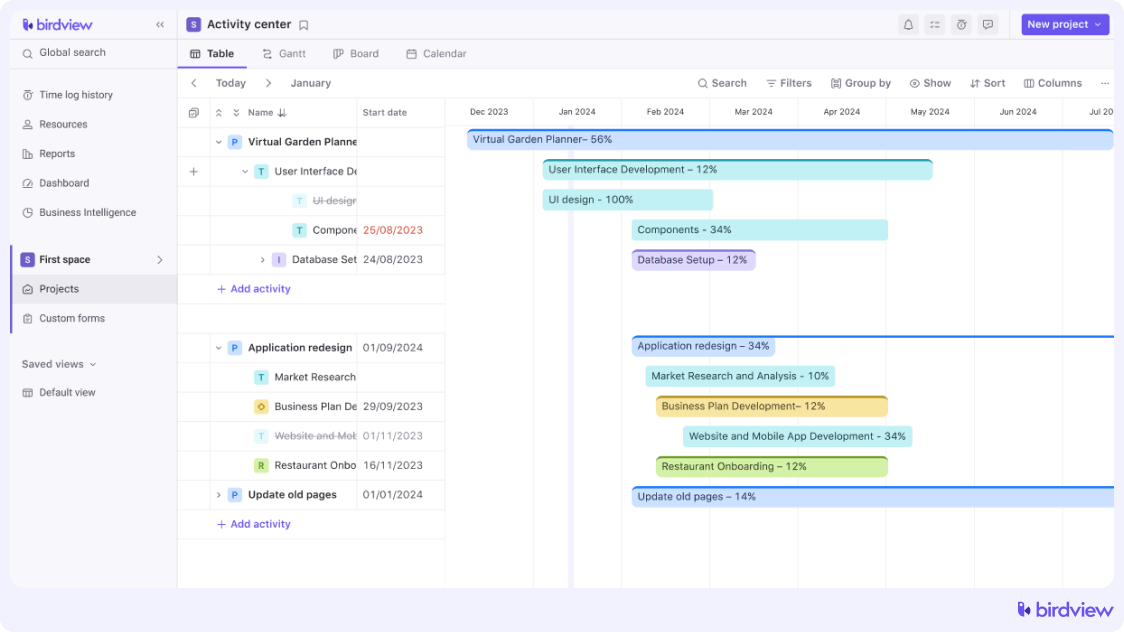
Birdview also allows for quick adjustments to the schedule, reallocating resources where they are most needed. This helps prevent the common issue of poor scheduling, where critical tasks might otherwise be delayed due to misallocated resources or overlooked deadlines.
3. Poor team quality control and supervision
This cause for inefficiency lay solely upon the shoulders of the PMs. If your team is taking too long to complete tasks, missing deadlines, or submitting work that is subpar, you, as PM, need to evaluate what mistake you have made.
Not to beat you down too much, but it is the truth. The following are the most common causes you should identify if your team is functioning inefficiently:
1. You hired the wrong person for the project
2. You hired the right person for the project but placed them in the wrong role
3. Your training and/or onboarding is insufficient
4. Your lower management and team leaders are not delegating tasks responsibly
5. You do have the right team members and management, but you micromanage
Fortunately for you, if you have identified any of the preceding as the cause(s) of your project suffering, they are all rather simple to fix. Here are the corresponding steps to take for each:
1. Let them go and find a qualified replacement
2. Identify which of their skills are pertinent to the project and swap them with another team member who can do the job previously assigned (refer to WBS)
3. If your team is capable, but really doesn‘t know what to do because of insufficient training, consider hiring a professional trainer to ensure new hires are up to speed
4. Meet with your managers and team leaders, and give them the confidence to delegate. A lack of delegation is often a lack of confidence in yourself and/or your team
5. Ease you hands off the reigns a bit. Following the previous point, as PM you are the ultimate delegator, and by not micromanaging you save precious time on avoiding needless communications, and instilling confidence in your team when they feel responsible for their work.
Birdview‘s performance tracking and role management features provide project managers with the tools needed to maintain high team performance and quality control. Performance tracking offers real-time data on team productivity and task completion rates, enabling quick identification of underperformance.
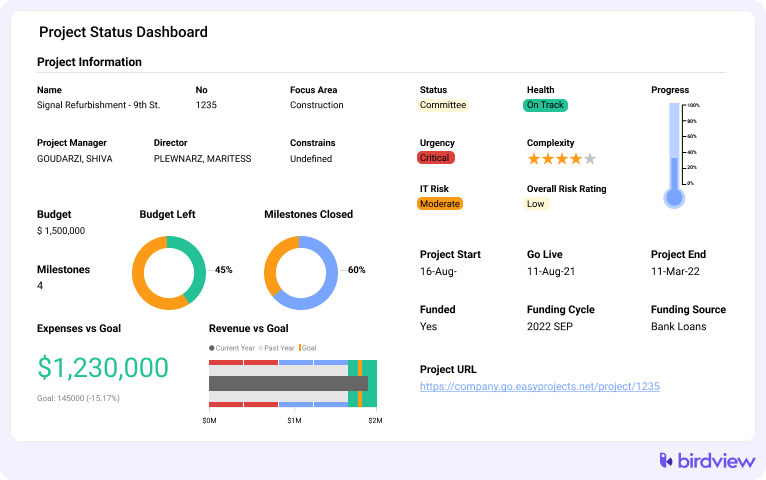
Role management ensures that team members are assigned tasks that match their skills and experience, reducing the risk of inefficiency due to mismatched roles. These features empower project managers to supervise effectively and make informed decisions that enhance team performance and project outcomes.
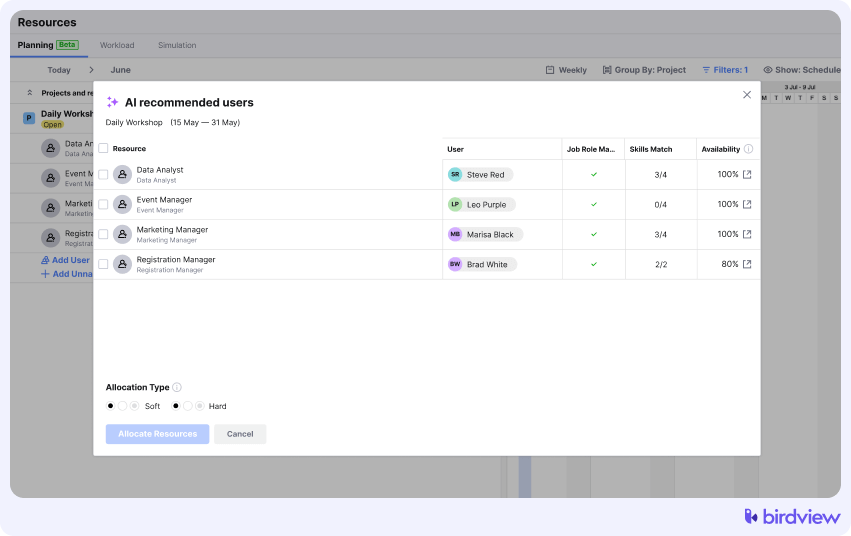
Inefficiency is an easier fix than you may think
While it first sounds daunting, inefficiency is easy to identify, and easy to remedy, compared to a lousy product design or a jarring shift in market demands.
Especially when using the Right Project Management Tool, identification of the problem is streamlined, as you don‘t need to sift through paperwork to discover errors and redundancies.
Just keep in mind, the power and the responsibility to solve inefficiencies, is in your hands as PM.



